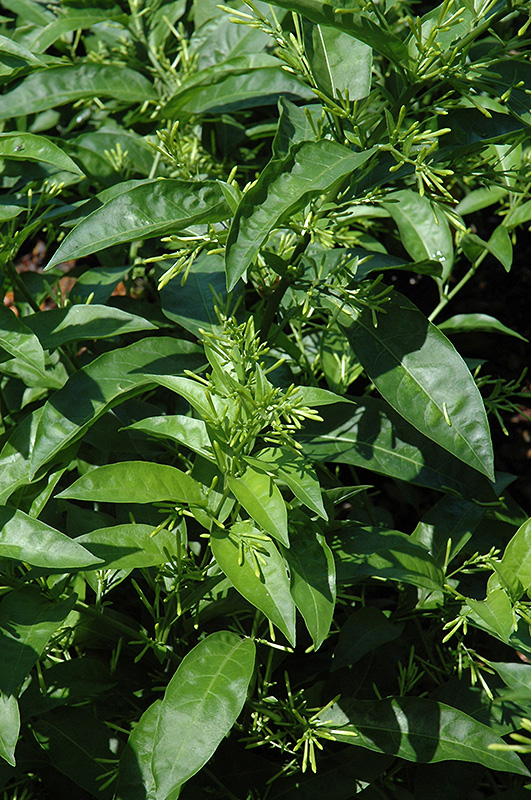Digging deeperPlant Library
Height: 8 feet
Spread: 6 feet
Sunlight:
![]()
![]()
Hardiness Zone: (annual)
Other Names: Night Blooming Jasmine, Queen of the Night
Description:
This delightful evergreen shrub produces white tubular flowers that are highly fragrant at night, followed by glossy white berries that turn deep purple; plant in sheltered area of the garden or along borders; may resprout from roots after a hard freeze
Ornamental Features
Night Blooming Jessamine features dainty clusters of fragrant white tubular flowers at the ends of the branches from early spring to late winter. Its attractive glossy pointy leaves emerge light green in spring, turning bluish-green in color the rest of the year. It produces deep purple berries from mid summer to late winter.
Landscape Attributes
Night Blooming Jessamine is a dense multi-stemmed annual with a shapely form and gracefully arching foliage. Its medium texture blends into the garden, but can always be balanced by a couple of finer or coarser plants for an effective composition.
This is a relatively low maintenance plant, and usually looks its best without pruning, although it will tolerate pruning. It is a good choice for attracting birds, bees and butterflies to your yard. It has no significant negative characteristics.
Night Blooming Jessamine is recommended for the following landscape applications;
- Accent
- Mass Planting
- General Garden Use
Planting & Growing
Night Blooming Jessamine will grow to be about 8 feet tall at maturity, with a spread of 6 feet. Although it's not a true annual, this plant can be expected to behave as an annual in our climate if left outdoors over the winter, usually needing replacement the following year. As such, gardeners should take into consideration that it will perform differently than it would in its native habitat.
This plant does best in full sun to partial shade. It does best in average to evenly moist conditions, but will not tolerate standing water. It is not particular as to soil type or pH. It is somewhat tolerant of urban pollution, and will benefit from being planted in a relatively sheltered location. Consider applying a thick mulch around the root zone in winter to protect it in exposed locations or colder microclimates. This species is not originally from North America.
A NetPS Plant Finder tool
This Plant Library is for informational purposes only. We may or may not carry the items listed. During many times of the year, we may carry many more plants in our store than are listed in the Plant Library. Please contact us directly at 303-690-4722 or visit our store for current availability and for assistance.
